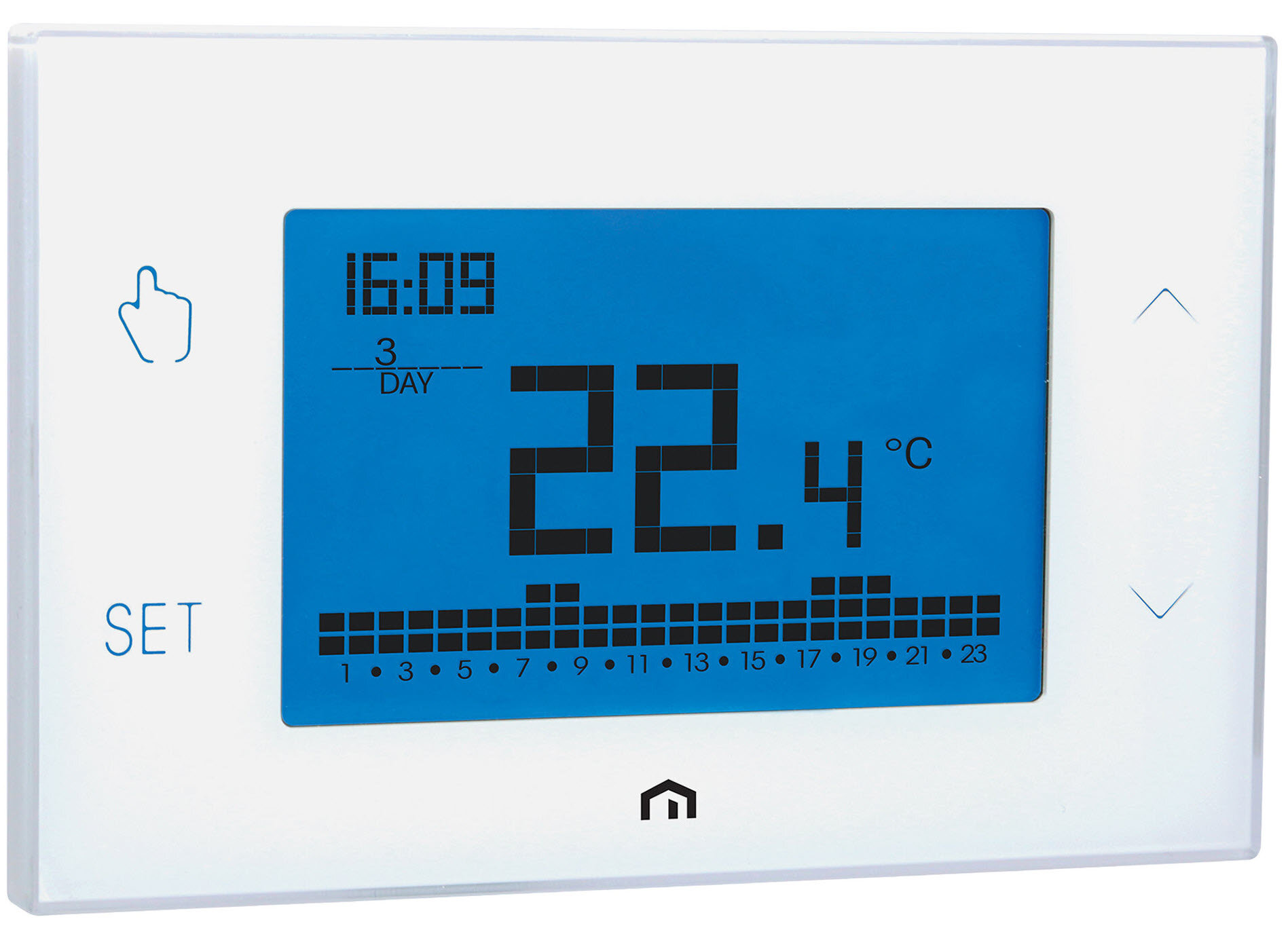How to save energy with optimal temperature control
Switching off the lights when you’re not in the room, turning off electrical appliances when you’re not using them…with simple adjustments to our daily habits we can save a significant amount of energy and tonnes of CO2 every day.
Yet, when talking about behavioural changes, it’s the thermostat that’s one of the most important instruments to help save energy since heating and cooling accounts for 40 to 50% of home energy consumption.

Turning down the thermostat
Energy-saving measures have already been promoted for quite some time. In an effort to combat the current energy crisis and reduce dependency on gas supplies, various governments are now even recommending a maximum indoor temperature of 19 °C.
In its Housing and Health Guidelines, the World Health Organization (WHO) suggests a basic room temperature of 18 °C for healthy and appropriately dressed individuals. For very young children, elderly people and people with an illness, however, the suggested room temperature is 20 °C.
These guidelines, with which one may more or less agree, point out that 19 °C remains a sufficient temperature for optimal indoor climate comfort. What is certain is that turning down the thermostat just 1 or 2 °C has a substantial impact on the amount of energy used and can help lower the energy bill by up to 10%.
Temperature control
The two types of thermostats that you’re most likely to have are room thermostats and radiator thermostats. By using these to efficiently control your heating and cooling, it’s easy to enjoy indoor comfort while saving energy and helping the environment.
Let’s look at how each type of thermostat can help save energy.
Saving energy with your room thermostat
Important to remember, even before you connect the room thermostat, is to install it in a suitable location. It’s generally recommended to mount it on an interior wall, about 1,5 meters above the floor and out of direct sunlight. Also make sure the device isn’t blocked by curtains or furniture or installed near a heat source. These guidelines will help to ensure that the thermostat can get an accurate reading of the room’s temperature.
Once installed, you’ll set the thermostat between 18 and 21 °C, or 23 °C if there are elderly people or very young children in the room.
Any higher and it will get uncomfortable warm. Turning the thermostat up won’t heat a room faster, it will just keep the heating on for longer, waste energy and cause the room to get too hot. Turning down the thermostat, on the other hand, can save money and energy.
At night, for example, you can easily lower the temperature 2 to 3 °C. For rooms that aren’t often used or when you leave your home for a long period of time, it’s best to maintain a minimum of 14 to 15 °C. A lower temperature could result in dampness, condensation, mould or building damage.
Saving energy with your radiator thermostats
Radiator thermostats help to keep a room at the preferred temperature. Contrary to a room thermostat that controls the boiler, a thermostatic radiator valve (TRV) controls the flow of hot water through the radiator it’s fitted to. A sensor inside the radiator thermostat monitors the air temperature and reduces or increases the water flow depending on whether the room temperature is higher or lower than the TRV setting. Just like with a room thermostat, it’s important to not block or cover the thermostat with curtains, furniture, clothes, etc. This way the air around it can flow freely and you’re sure to get an accurate room temperature reading.
If there are multiple radiators in a single room, make sure to set all the radiator thermostats to the same level for an energy-efficient temperature control (3 to 4 in rooms that you use frequently, lower in bedrooms and rooms that you use less). Turning one of the thermostats down or off won’t save any energy as the other radiators will have to work harder and the heat will not be distributed evenly. When heat is distributed evenly, it’s easier to lower the room temperature and still feel warm.
If you want to know more about how to save energy with our various climate comfort solutions, don’t hesitate to contact us.
We will more than happy to answer your questions and offer tailored advice.




